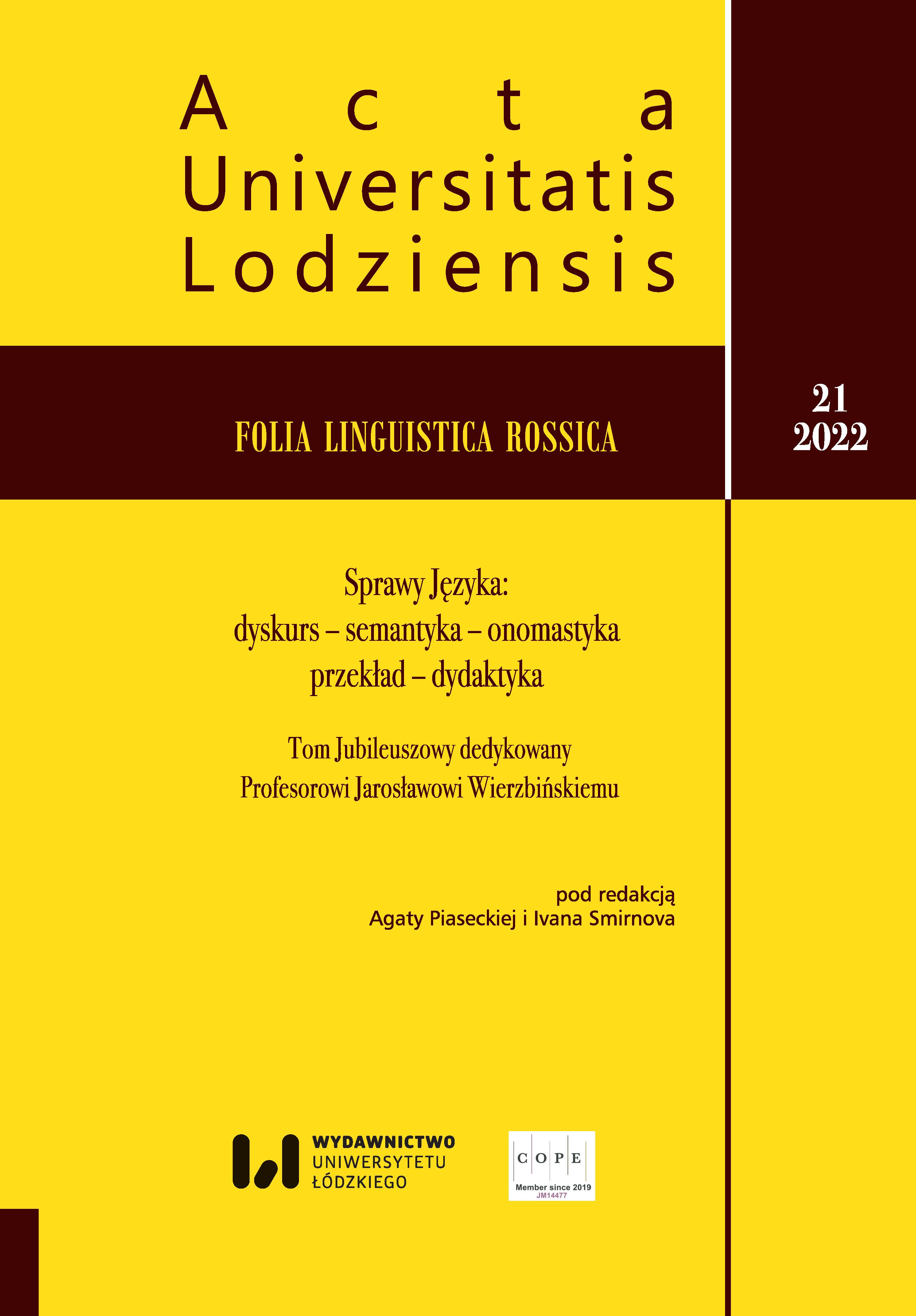Перевод номинаций русских жестов согласия и несогласия на болгарский язык (на материале жестов головы)
Translation of the Nominations of Russian Gestures of Agreement and Disagreement into Bulgarian (Based on Material on Head Gestures)
Author(s): Gocho GochevSubject(s): Social Sciences, Language studies, Customs / Folklore, Communication studies
Published by: Wydawnictwo Uniwersytetu Łódzkiego
Keywords: gesture; agreement; disagreement; gestural nominations; Bulgarian; Russian
Summary/Abstract: The aim of this article is to identify the peculiarities of translating the nominations of Russian gestures of agreement and disagreement into Bulgarian. The aim necessitates an analysis of gestures from the point of view of: a) their execution and the nature of their nominations, and b) the correctness/incorrectness of translation choices regarding Russian gesture nominations.The study, based on the methods of description and comparison, has led to the following findings: Russian gestures are standard, i.e. agreement has a primary connection with vertical head movement, and disagreement with horizontal head movement. In Bulgarian communication, along with such standard gestures, there are non-standard ones whose meaning does not depend on the vertical or horizontal movement of the head but on the movement of the chin. These differences determine the nature of their nominations: the Russian nominations have primary, permanent connections between agreement and vertical, as well as disagreement and horizontal. Bulgarian nominations, on the other hand, do not have such connections – they are characterized by homonymy, i.e. they denote both standard and non-standard gestures. Based on these differences, recommendations to translators have been put forward: conduct a careful analysis of the context which determines the meaning of the Russian gesture, and in the absence of an indication of its meaning, be guided by its primary connection, and the Bulgarian translation must necessarily remove the resulting homonymy that allows for the Bulgarian gesture nomination to be interpreted both as agreement and disagreement. The article relates to the little-explored area of comparative study of non-verbal Russian and Bulgarian means of communication.
Journal: Acta Universitatis Lodziensis. Folia Linguistica Rossica
- Issue Year: 2022
- Issue No: 21
- Page Range: 49-62
- Page Count: 14
- Language: Russian

